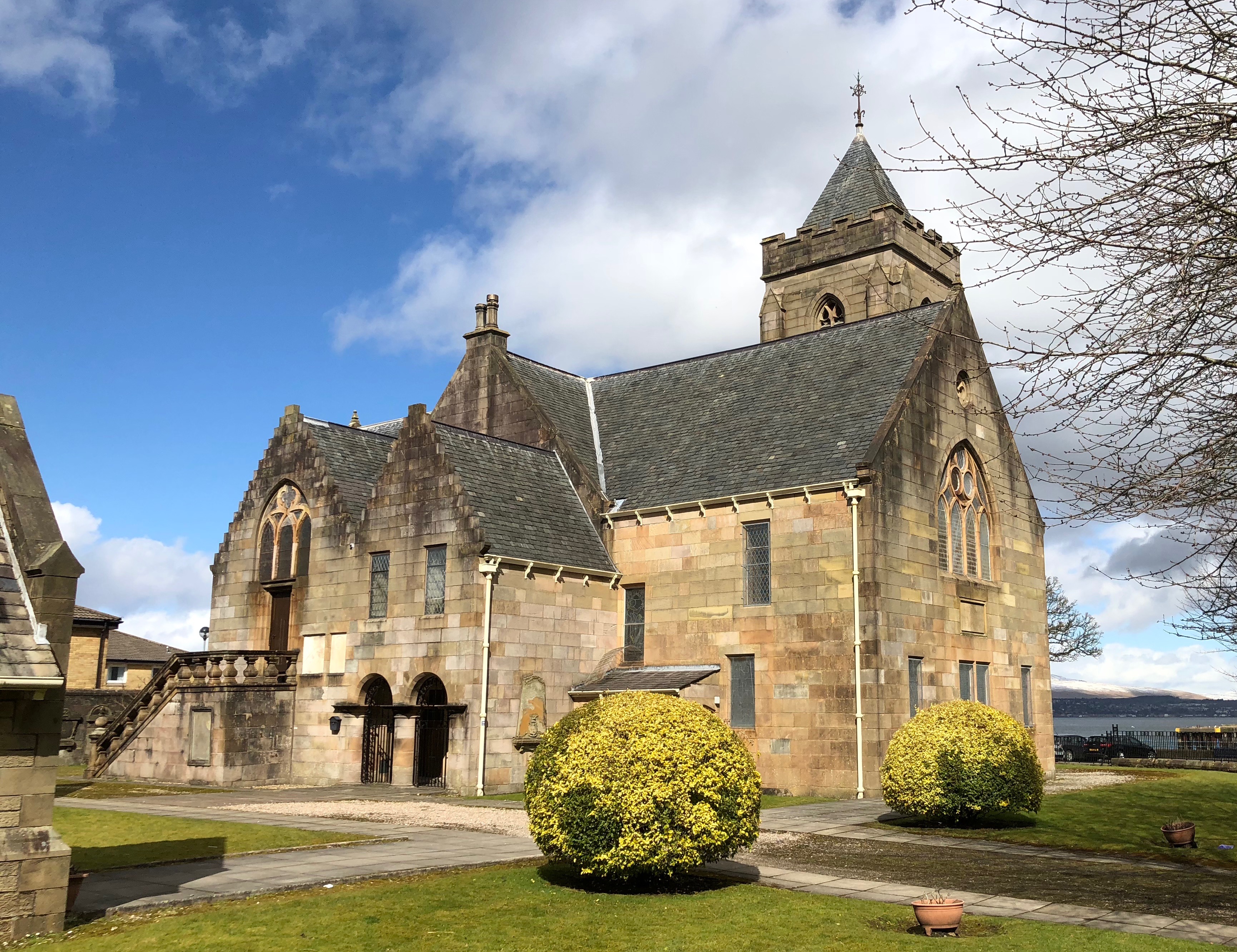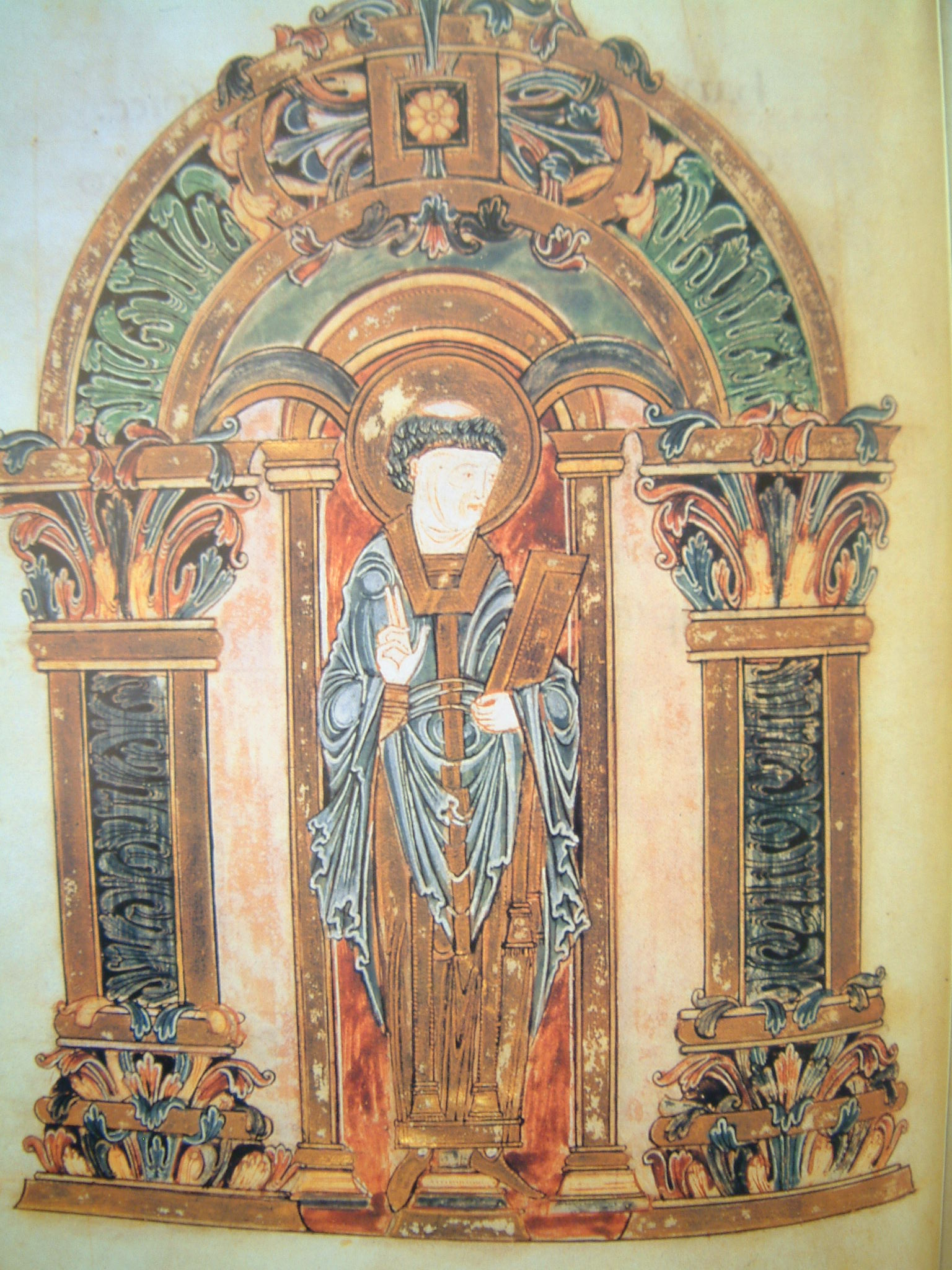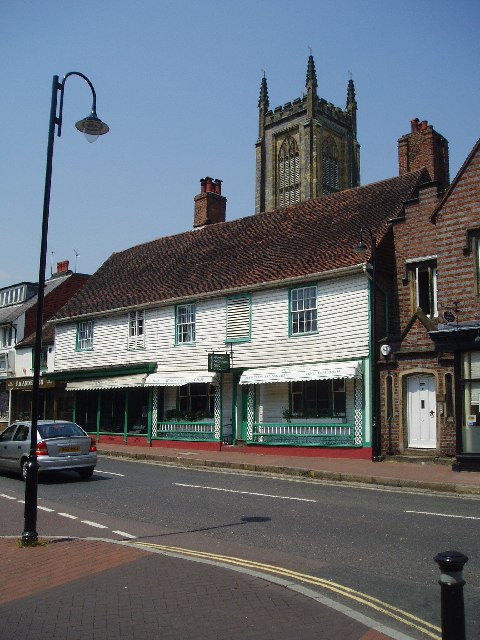|
Elizabeth Dempster
Elizabeth Strachan Dempster, ARSA, (23 April 1909 - 17 January 1987) was a Scottish sculptor. Biography Dempster was born on 23 April 1909 in Greenock, Scotland to Elizabeth Watt and Duncan Dempster, a sugar refiner. She was orphaned at an early age. After her parents' deaths, she moved to Edinburgh to be with her guardian, Dr Charles Warr, minister at St Giles' Cathedral, Edinburgh and Honorary Chaplain to the King George VI and later the Queen Elizabeth II. Dempster studied sculpture at Edinburgh College of Art (1930). Her tutors included the sculptors Alexander Carrick and Norman John Forrest, and she studied alongside the sculptors Hew Lorimer, Thomas W. Whalen and Scott Sutherland. Dempster also trained further in London at Regent Street Polytechnic and at Munich Academy in Germany. In the late 1930s, Dempster was commissioned to produce three large carvings in oak, two of angels and one of the biblical figure Jubal, for the new organ case at St Giles' Cathedral. H ... [...More Info...] [...Related Items...] OR: [Wikipedia] [Google] [Baidu] |
Greenock
Greenock (; sco, Greenock; gd, Grianaig, ) is a town and administrative centre in the Inverclyde council area in Scotland, United Kingdom and a former burgh within the historic county of Renfrewshire, located in the west central Lowlands of Scotland. It forms part of a contiguous urban area with Gourock to the west and Port Glasgow to the east. The 2011 UK Census showed that Greenock had a population of 44,248, a decrease from the 46,861 recorded in the 2001 UK Census. It lies on the south bank of the Clyde at the "Tail of the Bank" where the River Clyde deepens into the Firth of Clyde. History Name Place-name scholar William J. Watson wrote that "Greenock is well known in Gaelic as Grianáig, dative of grianág, a sunny knoll". The Scottish Gaelic place-name ''Grianaig'' is relatively common, with another (Greenock) near Callander in Menteith (formerly in Perthshire) and yet another at Muirkirk in Kyle, now in East Ayrshire. R. M. Smith in (1921) described the alternat ... [...More Info...] [...Related Items...] OR: [Wikipedia] [Google] [Baidu] |
Jubal (Bible)
Jubal (also Yuval, Yubal or Tubal; – ''Yūḇāl'') is a Biblical figure in of the Hebrew Bible and Old Testament. Mentioned only once, he is sometimes regarded by Christians, particularly by medieval commentators, as the 'inventor of music'. A descendant of Cain, his father is Lamech and his brother is Jabal. Biblical narrative Jubal is only known from his appearance in of the Hebrew Bible and Old Testament. The account describes him as a descendant of Cain and the son of Lamech and Adah. He is also a brother of Jabal, and half-brother of Tubal-cain and Naamah. Genesis credits him as the forefather of certain instruments: the ( he, כנור) and (). The translations of these vary depending on the edition: Family tree In Islamic sources According to an unnamed Jewish source mentioned in Muhammad Al-Tabari's work History of the Prophets and Kings (915 CE), Jubal invented musical instruments during the time of Mahalalel Mahalalel (, ) is an Anted ... [...More Info...] [...Related Items...] OR: [Wikipedia] [Google] [Baidu] |
Swithun
Swithun (or Swithin; ang, Swīþhūn; la, Swithunus; died 863 AD) was an Anglo-Saxon bishop of Winchester and subsequently patron saint of Winchester Cathedral. His historical importance as bishop is overshadowed by his reputation for posthumous miracle-working. According to tradition, if it rains on Saint Swithun's bridge (Winchester) on his feast day (15 July) it will continue for forty days. Biography St. Swithun was Bishop of Winchester from his consecration on 30 October 852 until his death on 2 July 863. However, he is scarcely mentioned in any document of his own time. His death is entered in the Canterbury manuscript of the ''Anglo-Saxon Chronicle'' (MS F) under the year 861. He is recorded as a witness to nine charters, the earliest of which (S 308) is dated 854. More than a hundred years later, when Dunstan and Æthelwold of Winchester were inaugurating their church reform, Swithun was adopted as patron of the restored church at Winchester, formerly dedicated ... [...More Info...] [...Related Items...] OR: [Wikipedia] [Google] [Baidu] |
East Grinstead
East Grinstead is a town in West Sussex, England, near the East Sussex, Surrey, and Kent borders, south of London, northeast of Brighton, and northeast of the county town of Chichester. Situated in the extreme northeast of the county, the civil parish has an area of . The population at the 2011 Census was 26,383. Nearby towns include Crawley and Horley to the west, Tunbridge Wells to the east and Redhill, Surrey, Redhill and Reigate to the northwest. The town is contiguous with the village of Felbridge to the northwest. Until 1974 East Grinstead was in East Sussex, before joining together with Haywards Heath and Burgess Hill as the Mid-Sussex district of West Sussex. The town is on the Greenwich Meridian. It has many historic buildings, and the Weald and Ashdown Forest lie to the south-east. Places of interest The High Street contains one of the longest continuous runs of 14th-century timber-framed buildings in England. Other notable buildings in the town include Sackville ... [...More Info...] [...Related Items...] OR: [Wikipedia] [Google] [Baidu] |
St Swithun's Church, East Grinstead
St. Swithun's is a Church of England church in East Grinstead, West Sussex, England, which is a Grade II* listed building. The site had a church since the 11th century. It was struck by lightning in 1772 and after it was rebuilt by James Wyatt it was opened in 1789. It is situated on a hill-top site near entrance to town, where in the past several tracks met. The area began to be settled in the late tenth century: and St Swithun Swithun (or Swithin; ang, Swīþhūn; la, Swithunus; died 863 AD) was an Anglo-Saxon bishop of Winchester and subsequently patron saint of Winchester Cathedral. His historical importance as bishop is overshadowed by his reputation for post ... (Bishop of Winchester, 852–862) was the choice for church patron. To this day it remains a visible landmark. Near the entrance to the church, three stones mark the supposed ashes of Anne Tree, Thomas Dunngate and John Forman who were burned as martyrs on 18 July 1556 because they would not renounce ... [...More Info...] [...Related Items...] OR: [Wikipedia] [Google] [Baidu] |
National Library Of Scotland
The National Library of Scotland (NLS) ( gd, Leabharlann Nàiseanta na h-Alba, sco, Naitional Leebrar o Scotland) is the legal deposit library of Scotland and is one of the country's National Collections. As one of the largest libraries in the United Kingdom, it is a member of Research Libraries UK (RLUK) and the Consortium of European Research Libraries (CERL). There are over 24 million items held at the Library in various formats including books, annotated manuscripts and first-drafts, postcards, photographs, and newspapers. The library is also home to Scotland's Moving Image Archive, a collection of over 46,000 videos and films. Notable items amongst the collection include copies of the Gutenberg Bible, Charles Darwin's letter with which he submitted the manuscript of ''On the Origin of Species,'' the First Folio of Shakespeare, the Glenriddell Manuscripts, and the last letter written by Mary Queen of Scots. It has the largest collection of Scottish Gaelic material o ... [...More Info...] [...Related Items...] OR: [Wikipedia] [Google] [Baidu] |
Roundel
A roundel is a circular disc used as a symbol. The term is used in heraldry, but also commonly used to refer to a type of national insignia used on military aircraft, generally circular in shape and usually comprising concentric rings of different colours. Other symbols also often use round shapes. Heraldry In heraldry, a ''roundel'' is a circular charge. ''Roundels'' are among the oldest charges used in coats of arms, dating from at least the twelfth century. Roundels in British heraldry have different names depending on their tincture. Thus, while a roundel may be blazoned by its tincture, e.g., ''a roundel vert'' (literally "a roundel green"), it is more often described by a single word, in this case ''pomme'' (literally "apple", from the French) or, from the same origins, ''pomeis''—as in "Vert; on a cross Or five pomeis". One special example of a named roundel is the fountain, depicted as ''a roundel barry wavy argent and azure'', that is, containing alternating h ... [...More Info...] [...Related Items...] OR: [Wikipedia] [Google] [Baidu] |
Princes Street Gardens
Princes Street Gardens are two adjacent public parks in the centre of Edinburgh, Scotland, lying in the shadow of Edinburgh Castle. The Gardens were created in the 1820s following the long draining of the Nor Loch and building of the New Town, beginning in the 1760s. The loch, situated on the north side of the town, was originally an artificial creation forming part of its medieval defences and made expansion northwards difficult. The water was habitually polluted from sewage draining downhill from the Old Town. The gardens run along the south side of Princes Street and are divided by The Mound, on which the National Gallery of Scotland and the Royal Scottish Academy buildings are located. East Princes Street Gardens run from The Mound to Waverley Bridge, and cover . The larger West Princes Street Gardens cover and extend to the adjacent churches of St. John's and St. Cuthbert's, near Lothian Road in the west. In 1846 the railway was built in the valley to connect the E ... [...More Info...] [...Related Items...] OR: [Wikipedia] [Google] [Baidu] |
Royal Scots
The Royal Scots (The Royal Regiment), once known as the Royal Regiment of Foot, was the oldest and most senior infantry regiment of the line of the British Army, having been raised in 1633 during the reign of Charles I of Scotland. The regiment existed continuously until 2006, when it amalgamated with the King's Own Scottish Borderers to become the Royal Scots Borderers, which merged with the Royal Highland Fusiliers (Princess Margaret's Own Glasgow and Ayrshire Regiment), the Black Watch, the Highlanders (Seaforth, Gordons and Camerons) and the Argyll and Sutherland Highlanders to form the Royal Regiment of Scotland. History 17th century In April 1633, Sir John Hepburn was granted a warrant by Charles I to recruit 1200 Scots for service with the French army in the 1618–1648 Thirty Years War. The nucleus came from Hepburn's previous regiment, which fought with the Swedes from 1625 until August 1632, when Hepburn quarrelled with Gustavus Adolphus. It absorbed other ... [...More Info...] [...Related Items...] OR: [Wikipedia] [Google] [Baidu] |
Bellahouston Park
Bellahouston Park (Scottish Gaelic: ''Pàirc Bhaile Ùisdean'') is a public park in the Bellahouston district on the South Side of Glasgow, Scotland, between the areas of Craigton, Dumbreck, Ibrox and Mosspark covering an area of . The main part of Bellahouston Park was acquired by Glasgow Corporation in 1895 for the sum of £50,000, and opened to the public in 1896. Three years later, the city's second municipal golf course was established at Bellahouston, following the success of the course at Alexandra Park. The park was extended in 1901 by the addition of a part of Dumbreck Lands purchased for £2,824 from Sir John Stirling-Maxwell. A further addition was made in 1903, at a cost of £40,222, by including the lands of Ibroxhill, from which commanding views of the city are available. In 1938 the Empire exhibition was held at the park. The site took fourteen months to build. The price of admission was one shilling, and 12.5 million visits were recorded. The exhibiti ... [...More Info...] [...Related Items...] OR: [Wikipedia] [Google] [Baidu] |
Empire Exhibition, Scotland 1938
Empire Exhibition, Scotland 1938 was an international exposition held at Bellahouston Park in Glasgow, from May to December 1938. The Exhibition offered a chance to showcase and boost the economy of Scotland, and celebrate Empire trade and developments, recovering from the depression of the 1930s. It also marked fifty years since Glasgow's first great exhibition, the International Exhibition (1888) held at Kelvingrove Park. It was the second British Empire Exhibition, the first having been held at Wembley Park, London in 1924 and 1925. Its function was similar to the first National Exhibition in Paris in 1798, and to the first International Exhibition, the Great Exhibition in London in 1851 attended by 6 million visitors. It was declared open by King George VI and Queen Mary on 3 May 1938 at the Opening Ceremony in Ibrox Stadium, attended by 146,000 people. In addition to the Royal Patrons and the Honorary Presidents representing governments and institutions here a ... [...More Info...] [...Related Items...] OR: [Wikipedia] [Google] [Baidu] |
The Peel Group
The Peel Group is a British infrastructure and property investment business, based in Manchester. In 2022, its Peel Land and Property estate extends to of buildings, and over of land and water. Peel retains minority stakes in its former ports business and MediaCityUK. The Trafford Centre, which opened in 1998, is widely regarded as Peel's landmark development. It was sold in 2011 to Capital Shopping Centres for £1.6 billion, making it then the most expensive acquisition in British property history. £700 million of the consideration was in shares and Peel continued to buy shares in the purchaser that went into administration, eliminating share value, in 2020. The Peel Group held a series of other substantial investments in listed businesses including Land Securities Group plc and Pinewood Shepperton plc, and in 2022 owns 14.1% of Harworth Group plc History Name and listings The Peel Group was known from 1973 to 1981 as Peel Mills (Holdings) Ltd; from 1981 to 2004 as ... [...More Info...] [...Related Items...] OR: [Wikipedia] [Google] [Baidu] |








